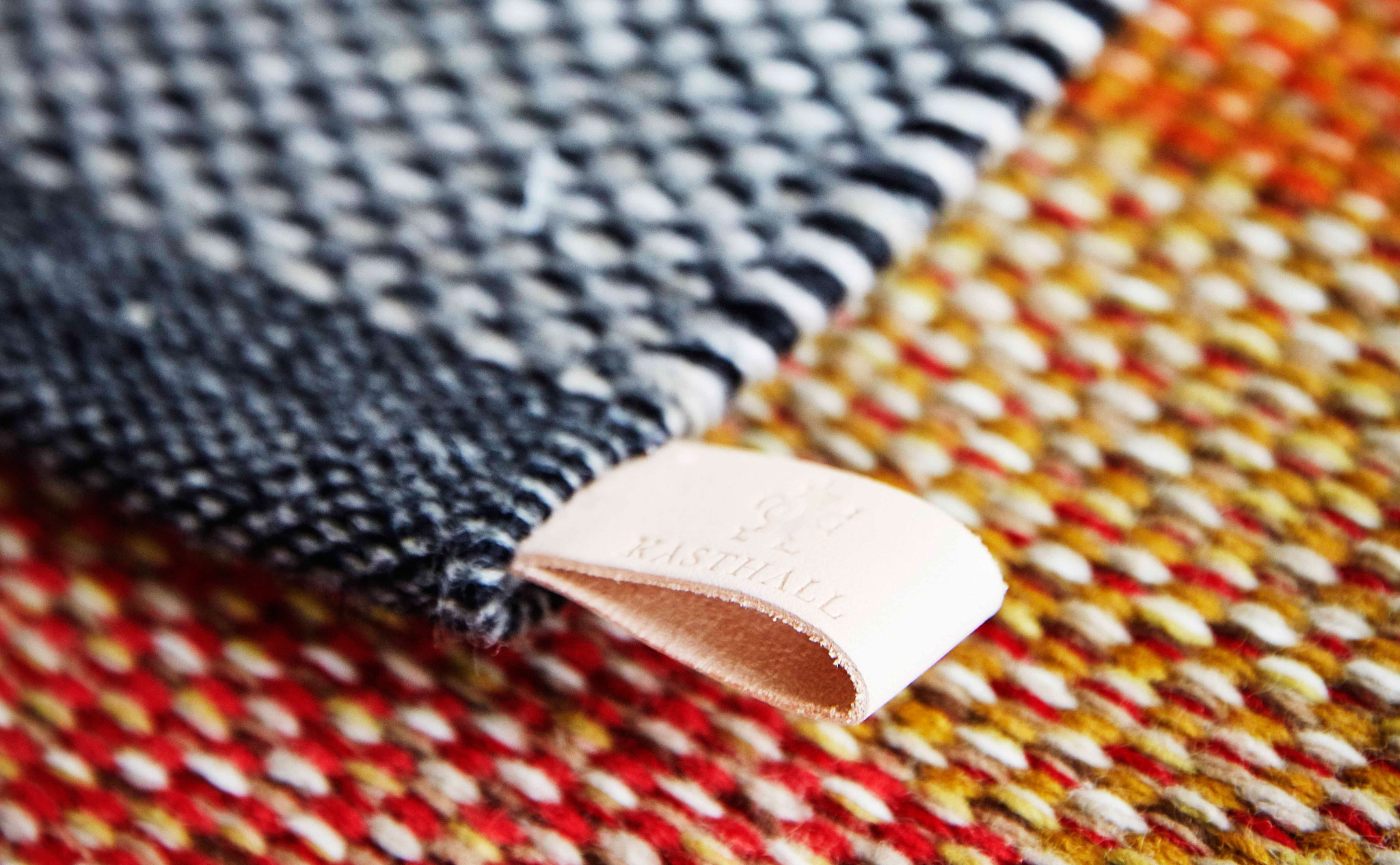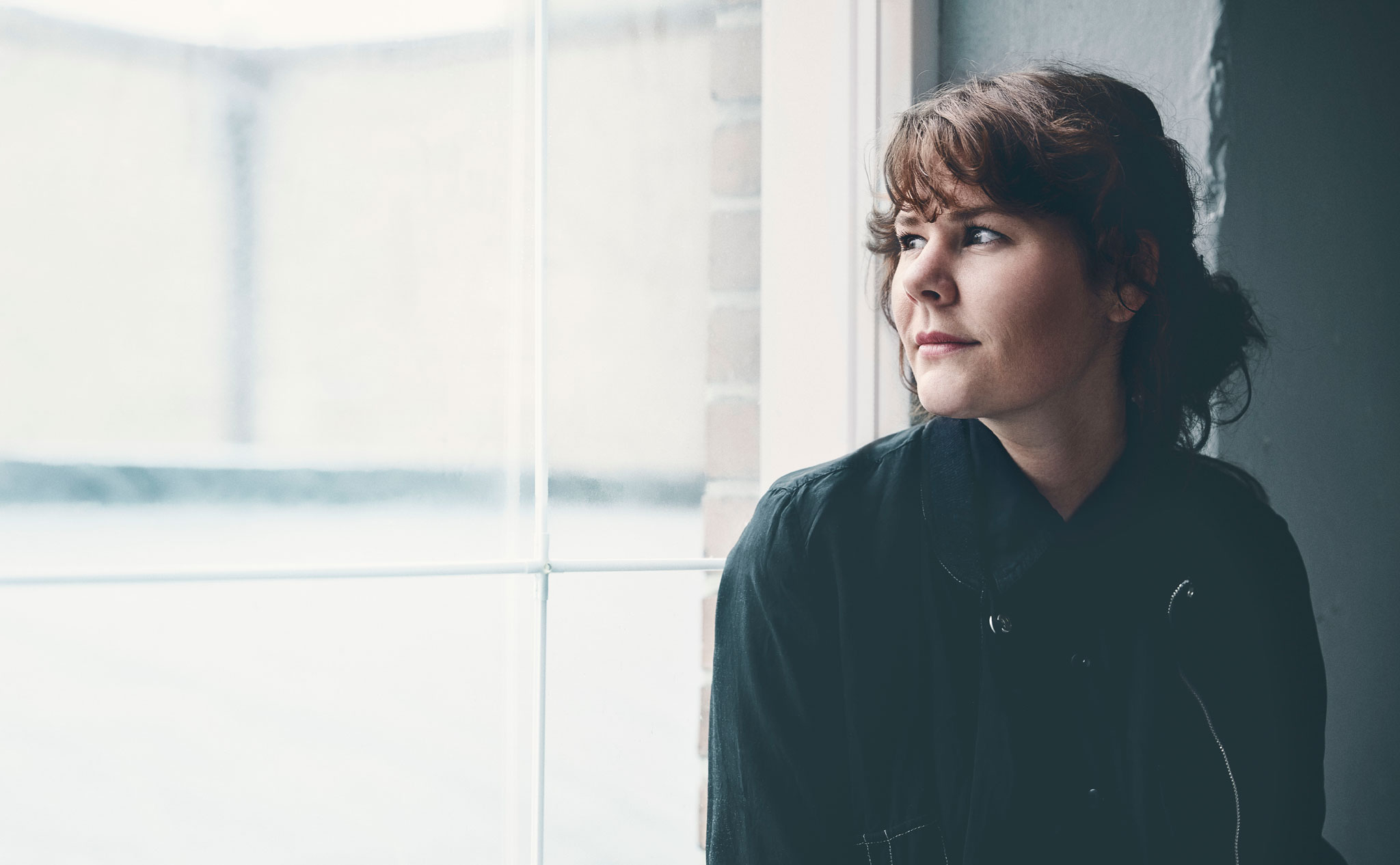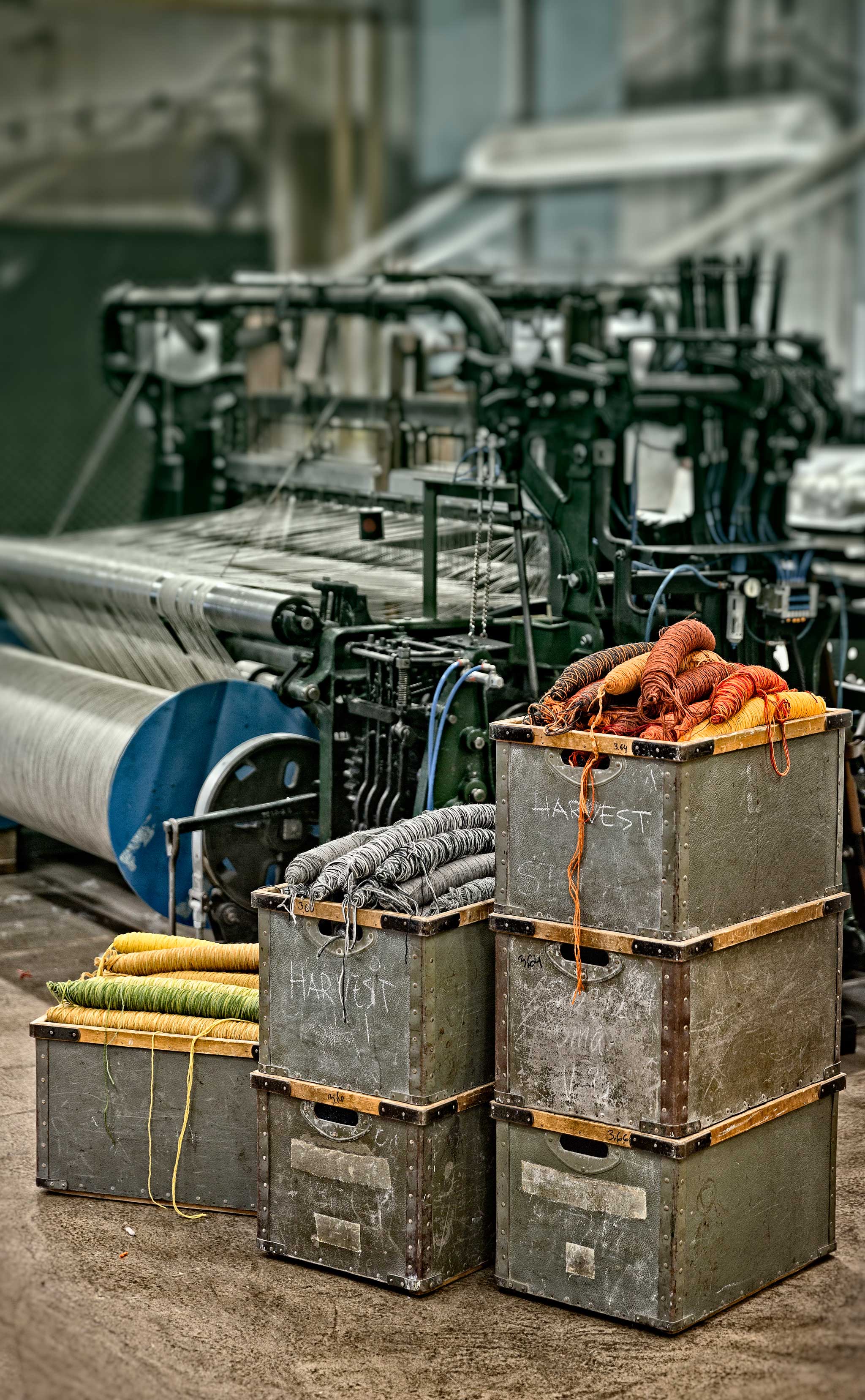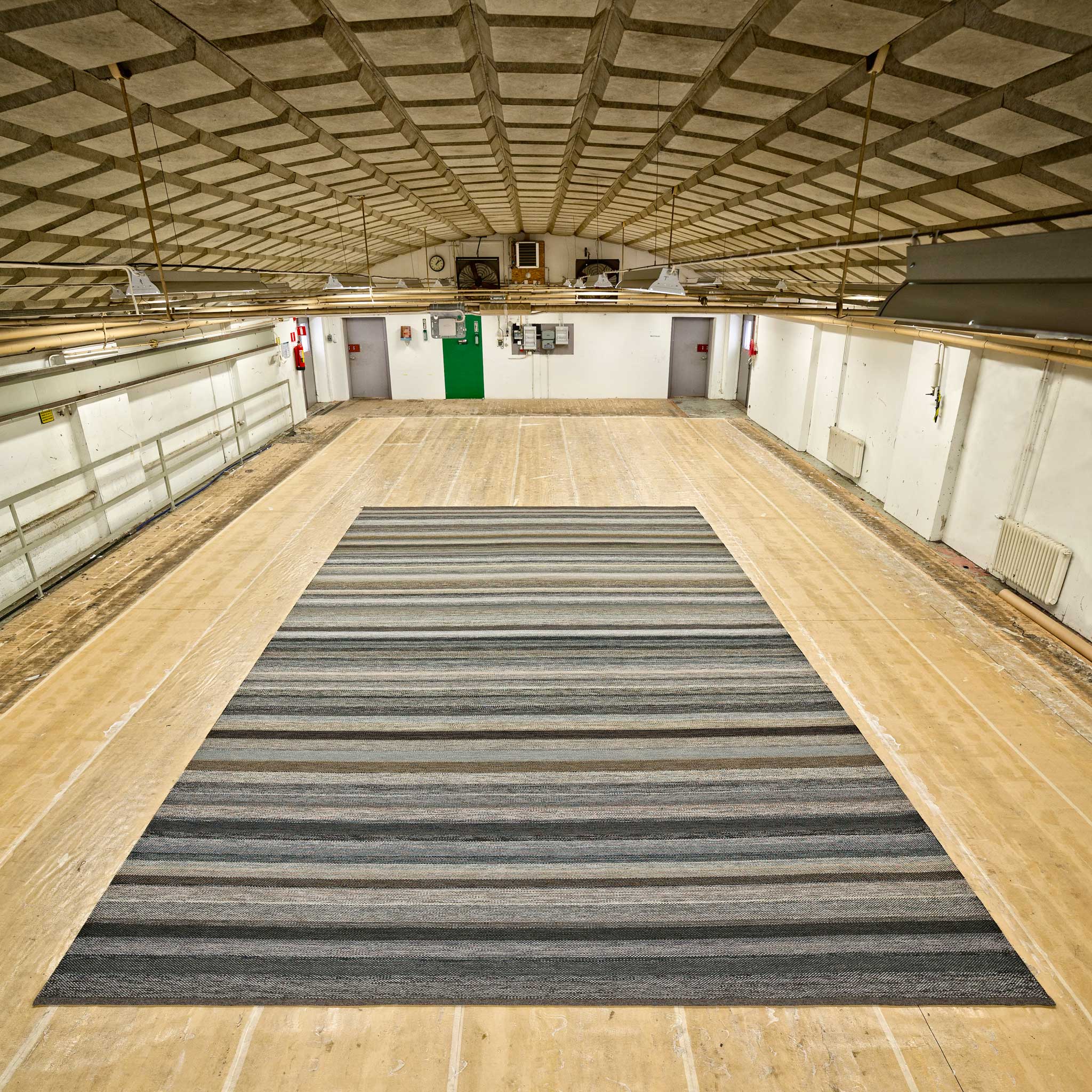The process of making custom or bespoke rugs and carpets is one that has many benefits both for the manufacturer as well as the consumer. Consumers enjoy the luxury of specifying each of every detail of the carpet – within the confines of a particular maker’s capabilities – and individual makers, importers, and retailers realize lower inventory cost and waste as they are not producing full carpets on speculation alone. No matter how efficient the process however there will always be surplus yarn after a rug is finished. ‘There are often two or three spools of a certain colour yarn left over after weaving a rug. This is because we make a few extra spools in case we need to redo something during the production process.’ explains Ellinor Eliasson, a designer at Swedish carpet house Kasthall. ‘We have high quality requirements for finished products, which is why we cannot reuse the residual spools of wool for rugs in the same collection due to the risk of minor colour discrepancies.’ While this attention to detail and stringent requirements for colour precision are enviable and of great benefit to highly demanding clientele, it nonetheless results in surplus yarn which was, until recently, sold in Kasthall’s factory outlet or discarded as waste. ‘It is not much [waste], but we aim for 100% sustainability.’ says Kasthall’s Director of Marketing Sara Althini.
In keeping with the firm’s 2017 theme ‘Arrival of Origin’ they set out to design a new collection of rugs to make use of, that is to say repurpose, this surplus yarn. The resulting collection entitled ‘Harvest’ draws inspiration from the traditional Swedish rag rug, transforming it into a decidedly modern incarnation.

To understand the fastidiousness of Kasthall is to appreciate a strong commitment to client satisfaction, an unwavering attention to precision of colour, and perhaps above all a commitment to quality in all its various forms. For example and apropos to the carpets at hand, Kasthall sources the wool it uses from New Zealand, a country renown for good quality long-staple wool; ideal for producing strong, durable carpets. The raw wool is freighted to Kinna, where their manufactory is located, and processed into dyed yarn specifically for Kasthall in a neighbouring facility. ‘It is not in our building, but next door to us, so we can easily control the process.’ states Althini. Dyed yarn is then spooled for weaving on a per order basis allowing for maximum colour precision, one of the hallmarks of the firm.

‘One of our most important tasks in the design studio is to further Kasthall’s environmental stewardship and minimize our carbon footprint through sustainable design and production methods. The yarn that is used for our rugs is prepared, coloured and spooled exclusively for each individual rug. The variation in colour of the residual spools of yarn posed a challenge and inspired us to find an exciting way to put it to use. That’s how the Harvest idea was born.’ says Eliasson, who created the ‘Harvest’ concept for Kasthall.
Eliasson took inspiration from traditional rag rug weaving which typically uses either two (2) or three (3) shuttles on the loom. The more shuttles, the more colours of rag – or in the case of ‘Harvest’ yarn – in use at any one time. By opting to use three (3) shuttles Kasthall maximizes the colour blending within each section of a finished rug allowing for optimal visual appeal and a depth of colour unable to be realized by single shuttle weaving. As one (1) spool ends a new one in another similar hue is added. Factoring in three (3) spools (one for each shuttle) starting and finishing at variable times, the unforetold unique colour combinations create an exciting, colour-shifting surface. For those more familiar with handknotted rug and carpet construction, this is more or less equivalent to tweeding yarns when tying knots. The eye blends the colours together in a more nuanced manner, with more depth of colour than is achievable with just a single hue.

To achieve a degree of harmony and to create visually appealing rugs Kasthall sorts the residual spools of yarn into six different colour groups: green, black/grey, red/yellow, pink/purple, blue and brown/beige. These are then used to weave the ‘Harvest’ rugs. This sorting process allows a client to choose between six colourways – in other words each unique ‘Harvest’ rug is dictated by whatever yarn is left over. To further differentiate the new collection from Kasthall’s existing woven rugs, the edging/binding yarn of a ‘Harvest’ rug colour-shifts in concert with the field colour, similar to any carpet made with a high attention to finishing detail such as the Nepali produced Tibetan weave ‘Stripes‘ carpets from Reuber Henning.

‘Harvest’ rugs are produced a per order basis, sized to the individual requirements of the client in any one of the six predefined colour groups. Of course, as a bespoke carpet house Kasthall is also able to accommodate special requests such as a recent project in Sweden which required a mix of two colour groups: black/grey and brown/beige. Though as Althini reminds, ‘It could be that there is not enough surplus yarn to produce a rug. In that case the client would be placed on a waiting list. As soon as there is enough [yarn], production will start.’
‘Harvest’ modern rag rugs were launched in New York the week of 22 May 2017 and are available for order at this time. Delivery times vary dependent upon the availability of residual surplus yarns. ‘We are proud that this product allows us to showcase how we work with sustainable design and production. Our vision is to be one hundred percent sustainable and Harvest is an important step towards achieving this.’ according to Lena Jiseborn, design director at the Kasthall design studio.
Overall I find the aesthetic and technical charm of the ‘Harvest’ Collection of modern rag rugs very inviting and versatile, well suited toward almost any interior. Either dressed up in a sombre neutral palette working as subtle ground or bright and cheerful in one of the more colourful palettes as a bold space-defining field, the nuance of blended colours is very forgiving, allowing for less precise matching of colour. This is more in tune with nature both chromatically – as the colours of the world are far from uniform – and environmentally as it makes best use of the resources at hand. These are carpets I love!



